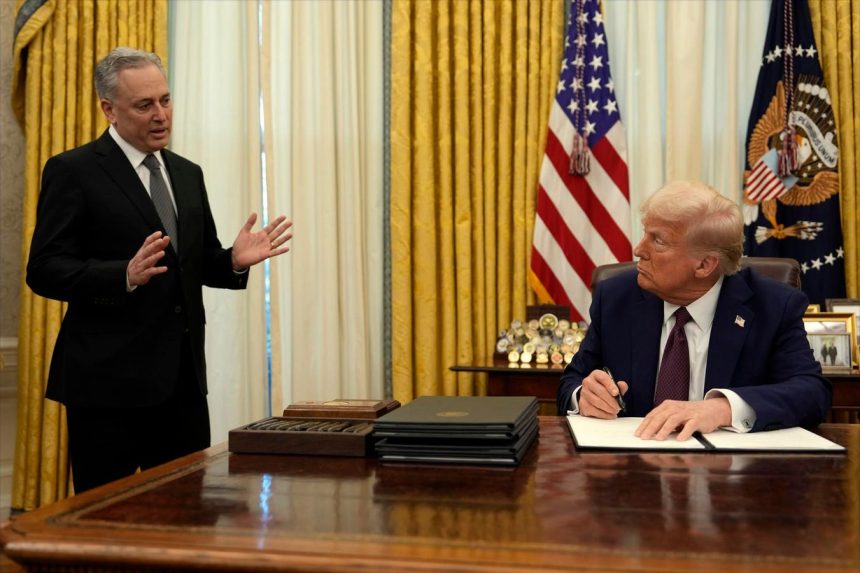Paragraph 1: Ushering in a New Era for US Crypto and Digital Assets
David Sacks, appointed by President Trump as the crypto and AI czar, spearheaded a press conference alongside key senators and representatives to unveil a comprehensive strategy for US leadership in the digital asset space. The central focus was the introduction of the GENIUS Act, a bill designed to regulate stablecoins by establishing clear issuance guidelines and assigning regulatory oversight based on the issuer’s scale. Sacks stressed the importance of fostering domestic innovation to maintain America’s competitive edge in financial technology. A key announcement was the formation of a joint House and Senate working group dedicated to streamlining crypto legislation, reflecting a commitment to regulatory clarity and the growth of a robust blockchain ecosystem within the United States.
Paragraph 2: Building a Unified Regulatory Framework for Crypto
The establishment of a bipartisan, bicameral working group signals a significant step towards harmonizing crypto regulation. This group comprises members from both the House and Senate Financial Services and Agriculture Committees, aiming to bridge the gap between varying regulatory approaches taken by agencies like the SEC and CFTC. This unified effort seeks to address the complex regulatory landscape where some digital assets are classified as securities while others are considered commodities. By bringing together key stakeholders, the working group aims to eliminate regulatory ambiguity, providing the crypto industry with clear guidelines on compliance, operations, and legal obligations, ultimately fostering a more stable and predictable environment for innovation.
Paragraph 3: Stablecoins and the Future of the Dollar in a Digital World
Stablecoins, digital assets pegged to traditional currencies, took center stage in the discussion as a crucial tool for maintaining US dollar dominance in the evolving global financial system. Senator Bill Hagerty introduced a new stablecoin bill, anticipated to align with previous bipartisan efforts, further solidifying the growing consensus for well-defined regulations in this area. Officials highlighted the potential of stablecoins to bolster the US dollar’s role as the global reserve currency in an increasingly digital world, driving demand for US treasuries and potentially lowering long-term interest rates. Furthermore, regulated stablecoins offer a transparent alternative to offshore counterparts, mitigating risks for consumers and businesses while facilitating cross-border payments, decentralized finance (DeFi), and global trade.
Paragraph 4: Creating a Supportive Environment for Crypto Entrepreneurs
The press conference emphasized the administration’s commitment to reversing the trend of crypto startups relocating overseas due to regulatory uncertainty. Years of unclear and inconsistent regulations have hampered innovation, leading to debanking of founders and a shift of innovation away from US markets. The administration’s focus on creating a transparent regulatory framework aims to empower crypto businesses to operate with confidence and legal certainty. Well-defined rules will not only encourage domestic innovation but also distinguish legitimate businesses from bad actors, reducing the risk of large-scale fraud and enhancing consumer protection through improved regulatory oversight of crypto markets. This initiative is expected to strengthen market integrity and promote healthy competition among US-based digital asset firms.
Paragraph 5: Prioritizing Market Structure and Consumer Protection Legislation
The press conference highlighted two key legislative priorities: market structure legislation, building upon the bipartisan Fit 21 bill previously passed by the House, and stablecoin legislation, gaining momentum with Senator Hagerty’s new bill. The market structure legislation aims to establish clear definitions for digital assets, assign regulatory oversight, and implement fair compliance requirements. The stablecoin legislation provides a foundation for regulating these critical instruments in the digital economy. Congressional leaders stressed the importance of bipartisan cooperation, reflecting optimism that both bills will swiftly pass and become law, paving the way for a more regulated and robust digital asset market. The inclusion of provisions addressing tax incentives for crypto holders remains a topic of discussion but has yet to materialize into concrete proposals.
Paragraph 6: Exploring the Potential of a US Bitcoin Reserve and Charting a Course for Future Leadership
The press conference touched upon the intriguing possibility of a US Bitcoin Reserve, an idea previously suggested by President Trump. Officials confirmed ongoing evaluations of the feasibility of holding Bitcoin as part of national reserves. Such a move could potentially diversify US reserves in the increasingly digital global economy, strengthen the country’s position in crypto markets by legitimizing Bitcoin as a financial asset, and attract investment in blockchain infrastructure. While details remain limited, the consideration of a Bitcoin Reserve underscores the administration’s commitment to exploring the transformative potential of cryptocurrencies. Despite the market’s muted response to the lack of immediate, groundbreaking announcements, the press conference marks a pivotal moment in US crypto policy. The focus on developing a robust regulatory framework is essential for government engagement with crypto assets at scale. The next few months will be crucial as lawmakers and regulators work to finalize legislation and implement a cohesive strategy, with the ultimate goal of ensuring the United States remains a global leader in the evolving landscape of digital assets.



